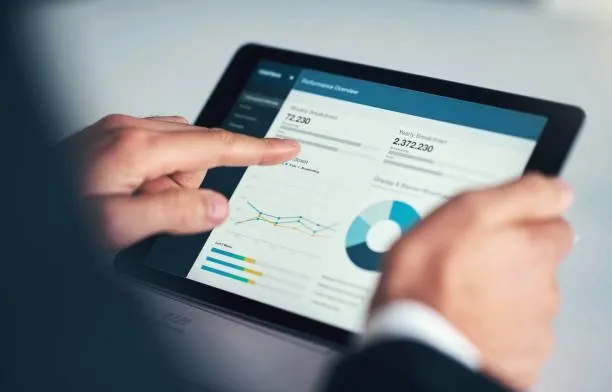AI and organisational culture
Are you thinking about buying stocks and shares? Many individuals, just like you, look to the markets to help them purchase a home, plan college education for their children, or save for retirement. Unlike in the financial industry, where federal deposit insurance protects deposits, the value of shares, bonds, and other assets changes with market conditions. Investments are risky, and there is no assurance of profit or protection against loss. Big data technologies are beneficial to you.
One of the sureshot ways to ensure the success of your investing efforts is to use technology to create more significant returns. Data analytics technology has become indispensable in modern finance and needs to be included in your investment plan leading to data-driven investing.
Data-driven investing is a broader term for investment approaches that evaluate traditional and nontraditional data sources to deliver specialized investment insights. As more data is generated daily, use it to analyze trends, patterns, and dangers. However, there are significant differences between data-driven and model-driven investing strategies, the former benefits an investor by providing access to the power of data to discover patterns that standard investment models can’t deliver.
Let’s learn about data-driven investment methods and check out a few known to help make better trading decisions.
What exactly are data-driven trading strategies
Data-driven strategies are a way to trade by analyzing data and using computer programs to trade automatically. They entail identifying and executing potential trade opportunities using computer algorithms and programs. Quantitative analysis is the base of this trading strategy, which employs study and measurement to convert complicated behavioral patterns into numerical values.

How do data-driven approaches operate
Based on a pre-configured model, automated trading strategies operate by continually evaluating market data to calculate the likelihood of a specific event occurring. Unlike discretionary trading, this type of trading is based only on market data, not gut sentiments, and it necessitates a significant amount of processing capacity to thoroughly analyze and generate compelling hypotheses from a large number of numerical data sets.
For a long time, most elite financial organizations and high-net-worth people have traded in this manner. Only recently have retail traders been able to implement data-driven approaches and reap its rewards.
The benefits of data-driven strategies
The key benefit of data-driven trading systems is that they constantly analyze market data to determine the chance of making a winning deal. A discretionary trader monitors, evaluates, and successfully makes trading choices for a small number of stocks. Still, they are to be overwhelmed by the quantity of data if they tried to do so for a large number of securities simultaneously. Data-driven techniques automate the process of monitoring, evaluating, and executing trades.
Another advantage is that it takes emotions out of trade execution and administration. When trading, traders frequently let their feelings get in the way. Losses are commonplace because emotions like fear and greed cloud your judgment. Automated trading solves this issue.

9 data-driven strategies for improved trading decisions
Data-driven strategies assist traders in lowering risk, increasing profits, or both. These strategies are helpful for more than just the statistical arbitrage desk. They are also used by traders in other industries who aim to enhance their outcomes via quantitative approaches. Here are numerous data-driven strategies for improving trading decisions.
1. Volatility graphs
Volatility surface mapping is one method that helps decide the best approach in any given market. Options with expiry dates and strike prices closer to the money show greater implied volatilities as the volatility surface approaches infinity. It’s similar to drawing the outlines of terrain, with different choice methods representing lowlands, plateaus, and mountains.
Trading strategies that are optimal for risk management and profit generation need to be determined by examining the volatility surface of a specific market. For instance, a trader considering buying options as one element of their trading strategy has to understand the interplay between this transaction and others, like buying a straddle or being short a put spread. Delve deeper and improve your understanding of the company by learning how to swing trade.
2. Moving averages and regression analysis
Linear regression is often used in trading. It’s a statistical technique for determining the line of best fit to describe past price history. It’s also possible to use non-parametric linear regression, which doesn’t make any assumptions about the underlying data distribution.
Linear regression is used in trading to learn more about the connections between the variables at play. A moving average filter, for instance, is to be applied to a stock or asset class’s return history to help spot patterns over time. The objective of this analysis is to determine if there is price momentum.
3. Machine learning
Machine learning is another emerging trading approach. Machine learning approaches are more than handy for hedge firms betting billions of dollars on interest rate movements. Proprietary traders also employ them for spotting price anomalies and order flow imbalances since they frequently result in significant profit possibilities.
Machine learning discovers patterns by using training data. After establishing a model, the trader uses the computer to recognize fresh real-time trends. For instance, in the case of options trading on an underlying asset, a machine learning model is useful to find a systematic approach.
4. Computer simulations
Trading ideas are commonly generated via computer simulations. Some traders wish to test how their software performs in different market environments or economic situations. This study often needs the trader to input past data into a back-testing platform to control factors such as volatility and instrument correlations.
When using computer simulations, it’s essential to remember that the findings are only as accurate as the assumptions used to create them. Hence it’s essential to include quality controls wherever feasible. Employ computer modeling for its strengths, such as examining alternative trading methods and evaluating their effectiveness under various conditions.
5. The Bollinger Bands
Bollinger Bands is another method that is useful in the options markets. These volatility bands were made by plotting two standard deviations on each side of the moving average of an underlying object. The Bollinger Band width changes with time, which helps identify regimes showing the most suitable option transaction. For instance, if the Bollinger Bands get narrower, this means that the market is already too full.
Traders need to know about these kinds of regimes because options appear to be more expensive when S&P 500 futures are high. The purpose of Bollinger Bands is to identify periods of favorable trading conditions and prevent traders from taking excessive risks when they need to be prudent to stay put and take no action.
6. AI investing
Using AI or big data is a novel approach to making profitable investment decisions. This method uses data science and the newest technologies to help you make alpha-based decisions.
The term alpha relates to two important driving forces:
- Bringing a good investment cycle to a close
- Accumulating multiple indicators to calculate active ROI (return on investment)
AI gathers massive amounts of online data to help you boost alpha. Corporate investors also use AI to track indicators like security governance and risks, company operations, public sentiment, etc.
7. Unconventional data
Investors traditionally rely on publicly available data such as market data (returns, volumes, prices), financial statements, and public investment records to make investment decisions. Data-driven investment helps individual and institutional investors make better judgments using unusual data like
- social media
- satellite images
- correct location quotient
- website traffic
This data helps them understand market conditions, trends, and best opportunities across regions and sectors. Unconventional data provides you an edge by giving current investing possibilities.
8. Using new data
Modern computing systems are excellent at data processing but need measurable or organized data to work. Data-driven investment uses raw, unstructured data to value businesses, including photos, speech recognition, language, and more.
New data allows private and corporate investors to analyze whole areas and spot market events and trends to alter their investment strategy. Apply analysis findings to value development and business valuation.
9. Analysis of social media sentiment
Data-driven investing’s biggest trend is sentiment analysis. This strategy involves studying customer reactions to a brand, market, or industry. Modern buyers post brand reviews on social media. Their blogs have high-quality data to help you evaluate if a brand or sector is paying off. However, mere mentions and remarks on social media isn’t going to be enough. Data-driven investing requires you to assess customers’ opinions and feelings about a brand.

Data-driven investing offers you crucial insights into the best developing market investment prospects
Avoid spending money on employing various investment professionals, such as business environment analysts, by examining centralized and alternative data. Rely on cutting-edge technology to analyze the collected data from a variety of sources to uncover the most recent investment trends in both established and emerging markets. In other words, data-driven investing is a definite approach to increase the quality of your investment decisions.
By Fatema Aliasgar

Ready to Take Control of Your Investments with Data Science?
After exploring the power of data-driven investing, the question is not whether you should incorporate it into your strategies but rather, how soon can you start. The world is bursting with data, and the potential it holds for informed and profitable investment decisions is unparalleled. Whether you are an individual trader or part of an institution, data science can significantly refine and enhance your decision-making process.
For those interested in tapping into the vast potential of data science in investing, we are excited to present a range of top-tier Data Science Courses. Whether you are a beginner eager to understand the basics or an experienced professional looking to upgrade your skills, we have a course for you. You’ll learn how to use data science tools, machine learning algorithms, regression analysis, and more, to identify trends and make data-driven investment decisions.
However, we understand that not everyone has the time or the inclination to become a data science expert. If you prefer to have professionals handle your data science needs, look no further. Our Data Science Services leverage cutting-edge technology to deliver in-depth, actionable insights that cater to your unique investment goals. We combine traditional and unconventional data sources to identify potential opportunities and challenges in the market, long before they become obvious to the general investing public.
Get started now!



